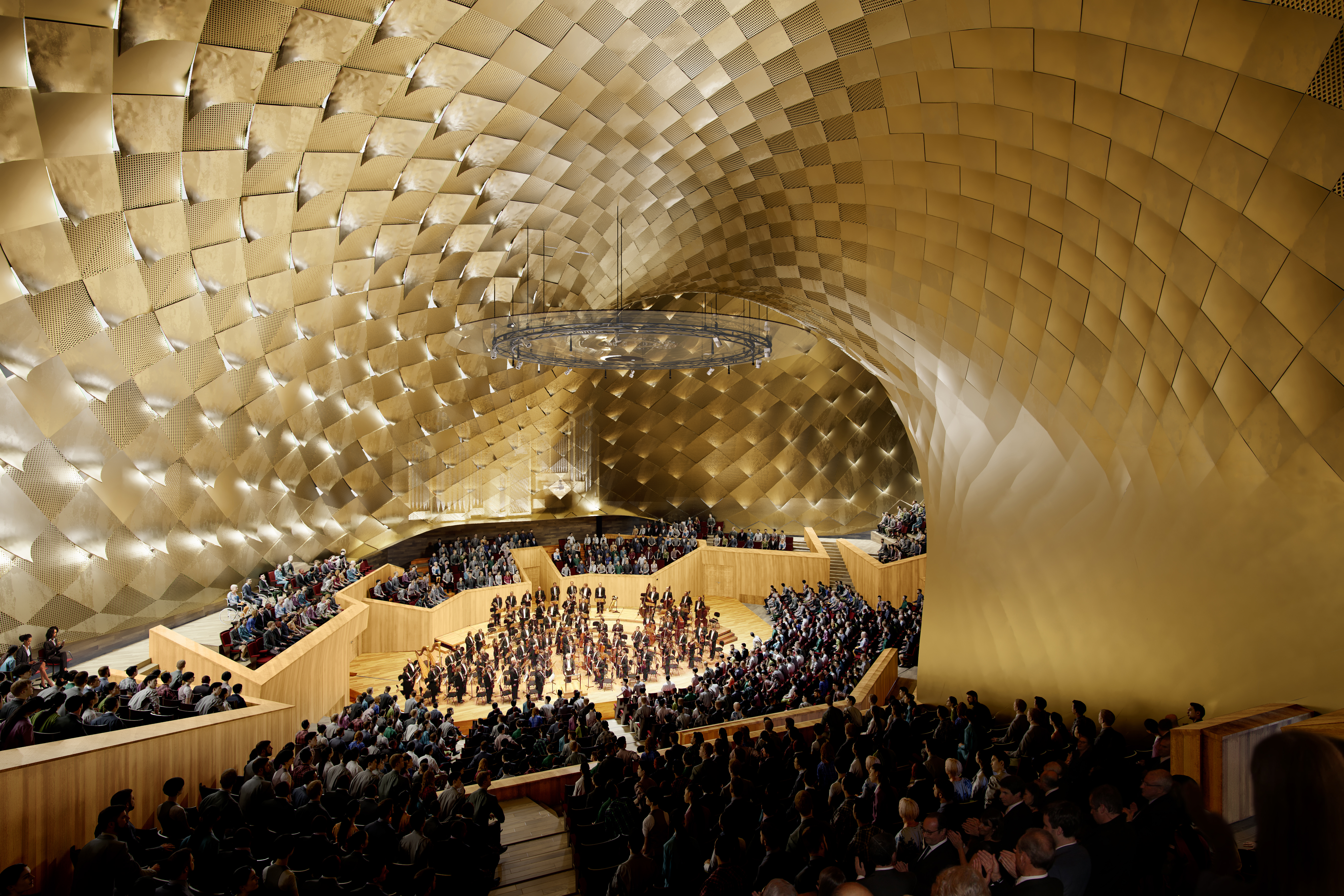
Client. Munich Municipality
Date. 2018
Area. 90.130 sqm
Cost. 410Mill Eur
Scope of our work. Full design Project.
Status. Shortlisted in restricted competition .Day/Marshall Acoustic Consultants
We were shocked when we learnt what Leonard Bernstein said about the Gasteig Philarmonie in 1985. His literal words where “Burnt it!”.
It was especially shocking since I heard the story from a stranger sitting next to me in a concert in the Gasteig Philarmonie– the great Beethoven´s Mass C Major with Mariss Jansons. The effects of psychology in acoustics are well known and have an impact, for example, in the election of the materials for the reflectors, or the colour and the light of the halls. But this psychological precedent is of a completely different level. There is a lot at stake, and the risk to fail with the public is major.
The next morning, in total angst, I contacted probably the best Acoustic Engineer in the world to be our consultant, Marshall Day Acoustic Engineers who did the Paris Philarmonie.
The task, I learnt, was to overcome a major problem that has been studied and understood with rigour. Fan shape auditoriums do not work. The main reason being they lack lateral reflections in central areas of the room- those reflections that you get in box shaped auditoriums.

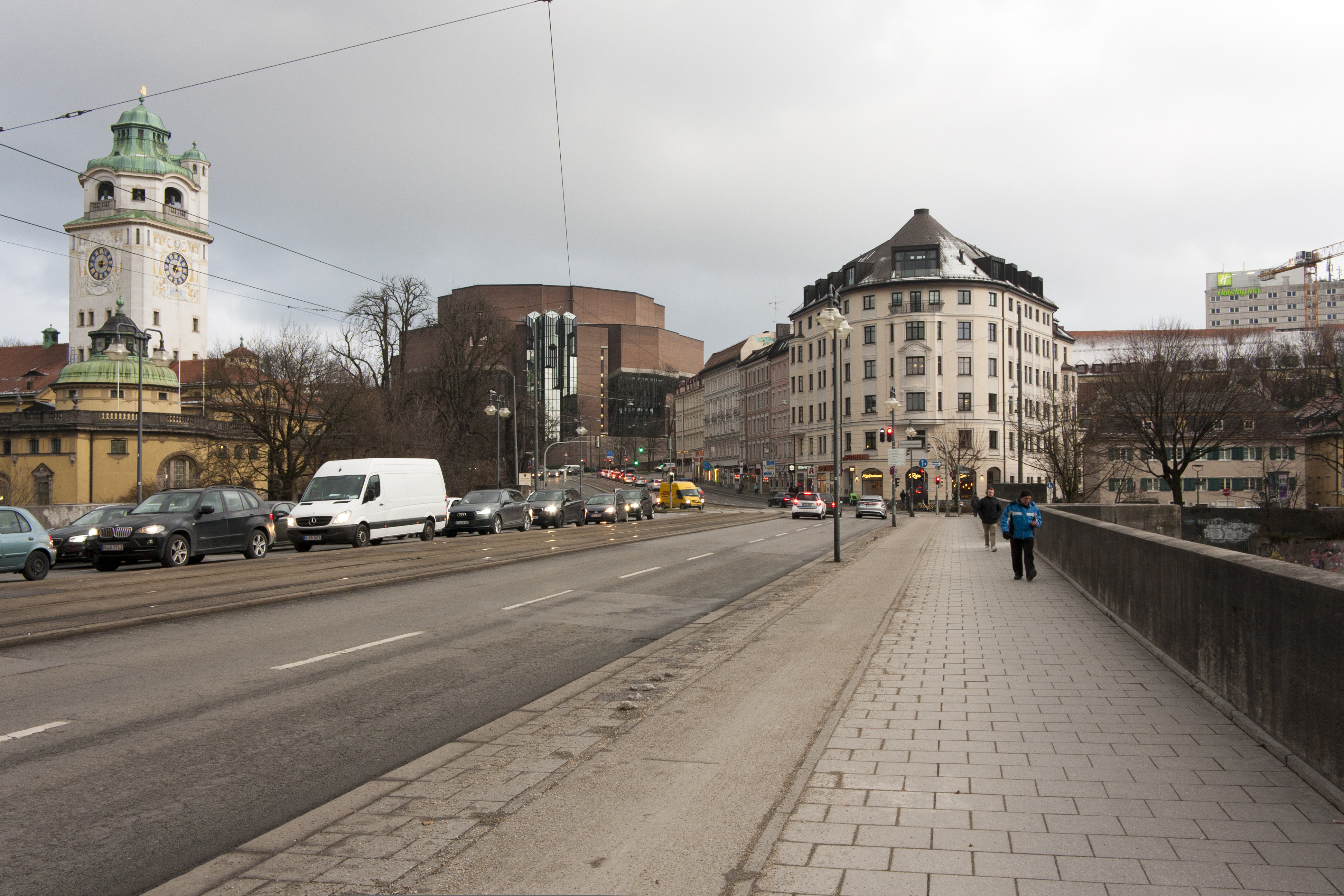

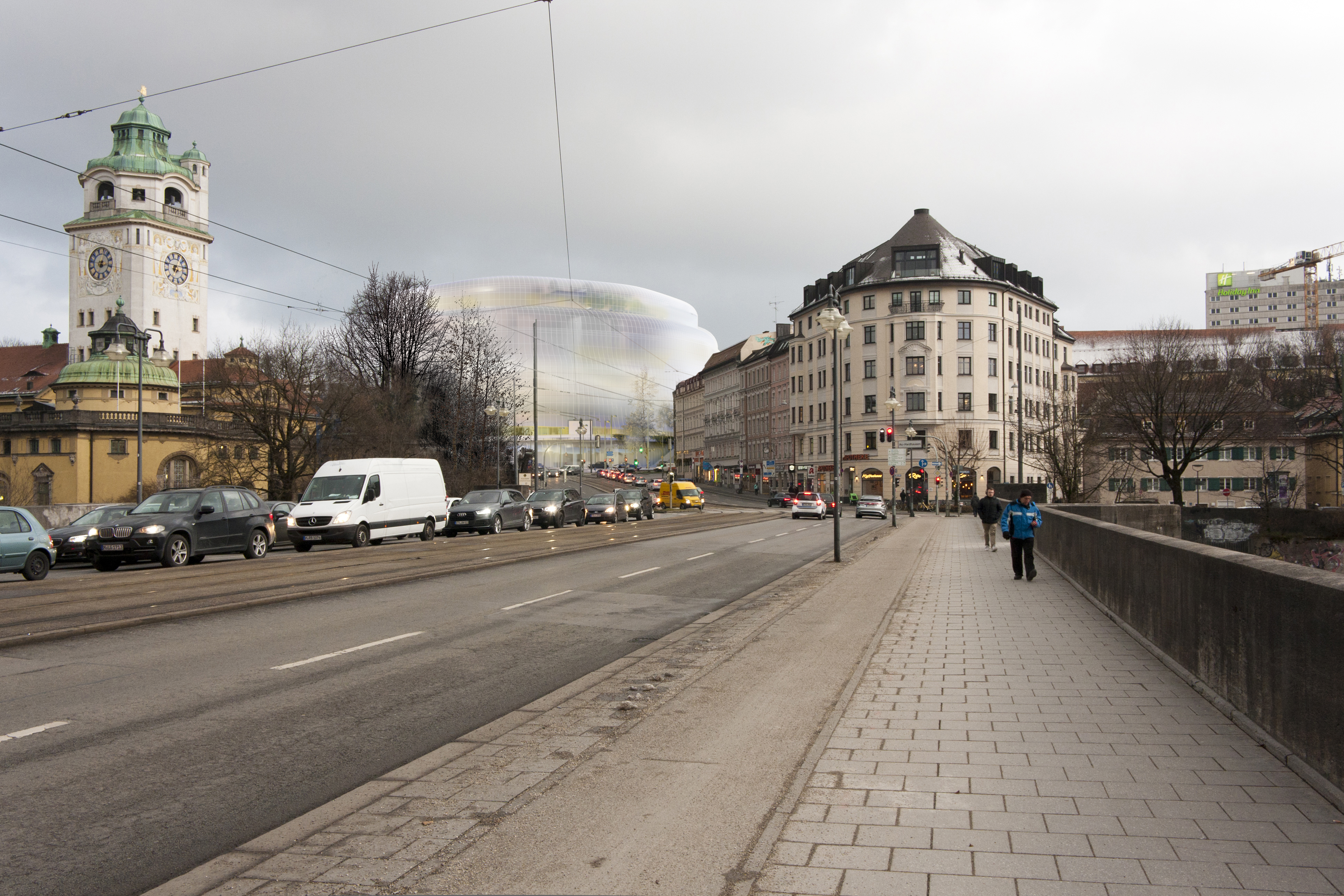
The majority of the visitors access the Gasteig from the East, coming from the tube station in Rosenheimer Strasse. It is foreseeable that this will continue to be like that in the future. There is potential in increasing the links to the bridge, the river and Am Gasteig areas on the West of the plot. A secondary access is maintained on the center of the plot, and a stair to the East.
We have consulted a leading glass façade manufacturer with great experience in the design and implementation of complex facades and we have come up with a solution that will create a formidable effect at a controlled cost and with an appropriate technology. The new glass façade on the Celebidache Terrace is envisaged to be of fritted glass. The idea behind it is to create a translucent and delicate veil from the exterior that feels much more transparent from the interior.
Glass technology, specially the design of the fritting patterns on the glass together with the use of different layers (Low E) and glass configurations (triple, double-chamber-single) will allow various degrees of translucency that will be very unique, but also sustainable and energy conscious. We are aiming for a solution that will be in the range of U value of U=0.9 W/m2K to 1.3 W/m2K.
We are proposing a chamber that will work differently for winter or summer conditions allowing for heat recovery or ventilation of hot air that will help to reduce the energy cost. It will be operated through the use of sensors and mechanically controlled elements.
The glass veil design will follow a rationalization of surfaces that will minimize the amount of doubly curved glass panels to help to control de cost within the established margins. In principle the glass veil is mostly solved with flat panels (65%) and generic cylindrical panels (25%). Only 10% of the surface will be doubly curved.
The design of the glass veil also considers a further possibility of using the tested possibility of glass being Cold Bent on site. This will allow for the reduction of curved panels, since there are many areas with a very gentle curvature that can be forced on flat glazed units directly during on site implementation.
The glass façade, as a whole, is composed of three elements placed in different areas. One of them is the glass veil that we have already mentioned, which will cover only a part of the total surface. The other two areas are made of generic flat panels and generic cylindrical panels that will come in finished industrialized elements to assemble in a conventional way.
We have also envisaged a couple of areas with vertical glass sliding units that will create interesting possibilities in the use of space. These units will mechanically slide down or up to a fully sealed position as desired
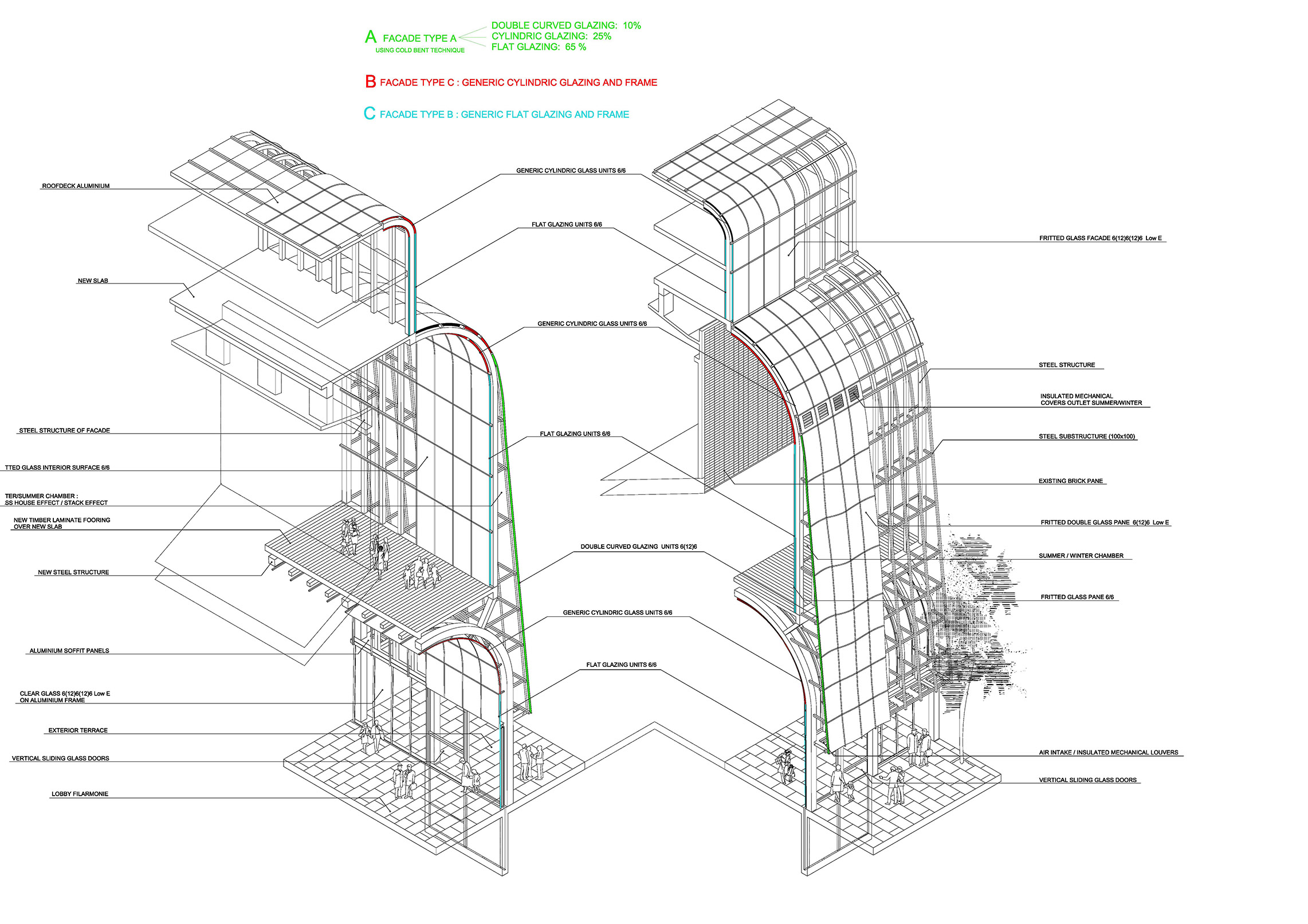

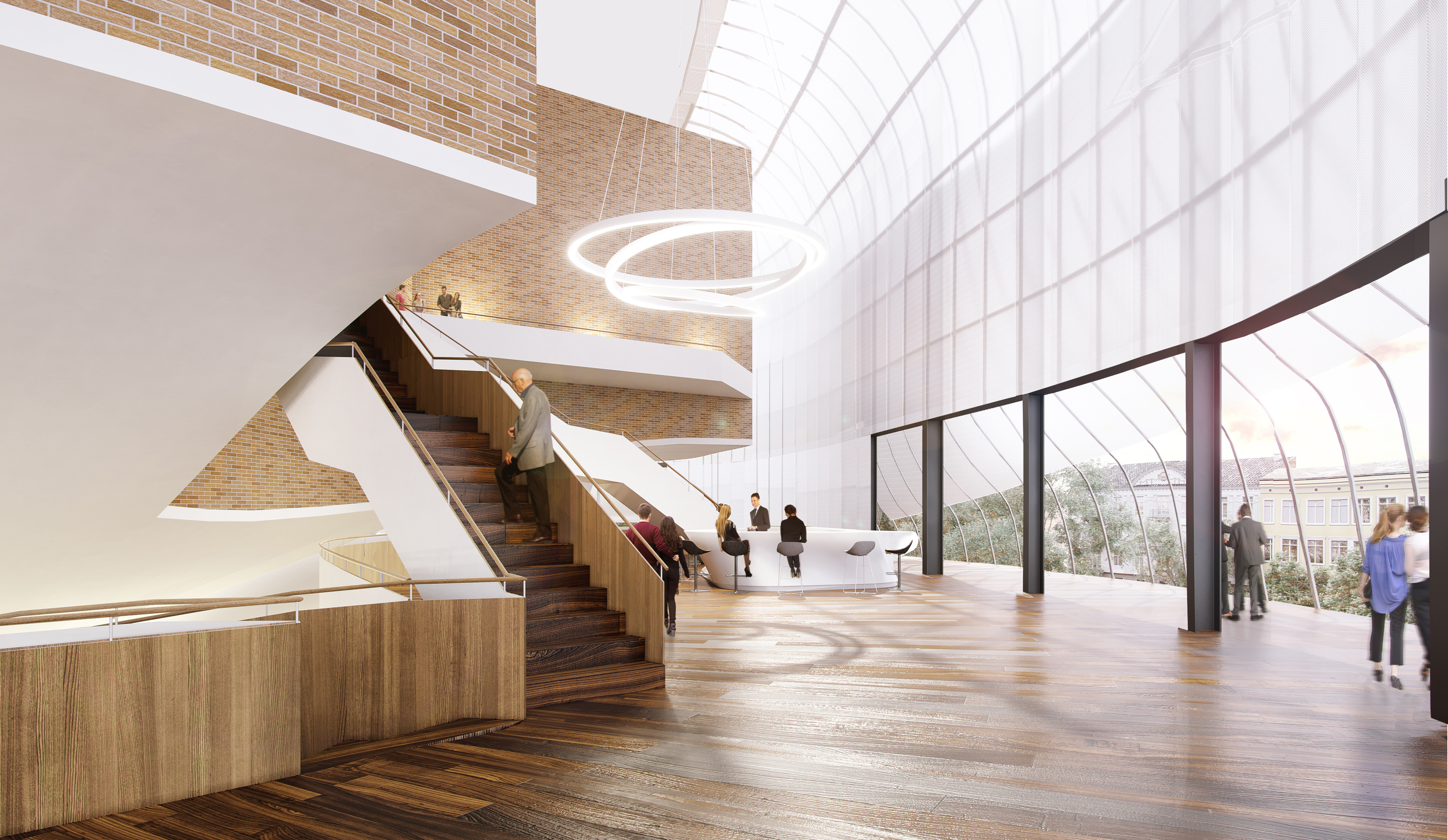
All the elements of the program will be recognizable through the use of graphics, colour and light. There will also be a clearly positioned Information Point in the centre of this space that will help with the organization and will also hold a modern automatic ticketing service.
The Foyer of the Philarmonie is directly connected, fluidly, to the Great Lobby. It can be closed if needed during the time of the performance with a vertically sliding glass door.
The connection to the Terrace, from the Great Lobby or the Foyer of the Philarmonie is also fluid and open, unless the vertical sliding foors or folding doors are closed.
The spatial configuration of the Great Lobby will convey feelings of transparency, democracy, modernity, playfulness, inclusion and diversity. It will be a new great covered public space for Munich full of activity and interaction.
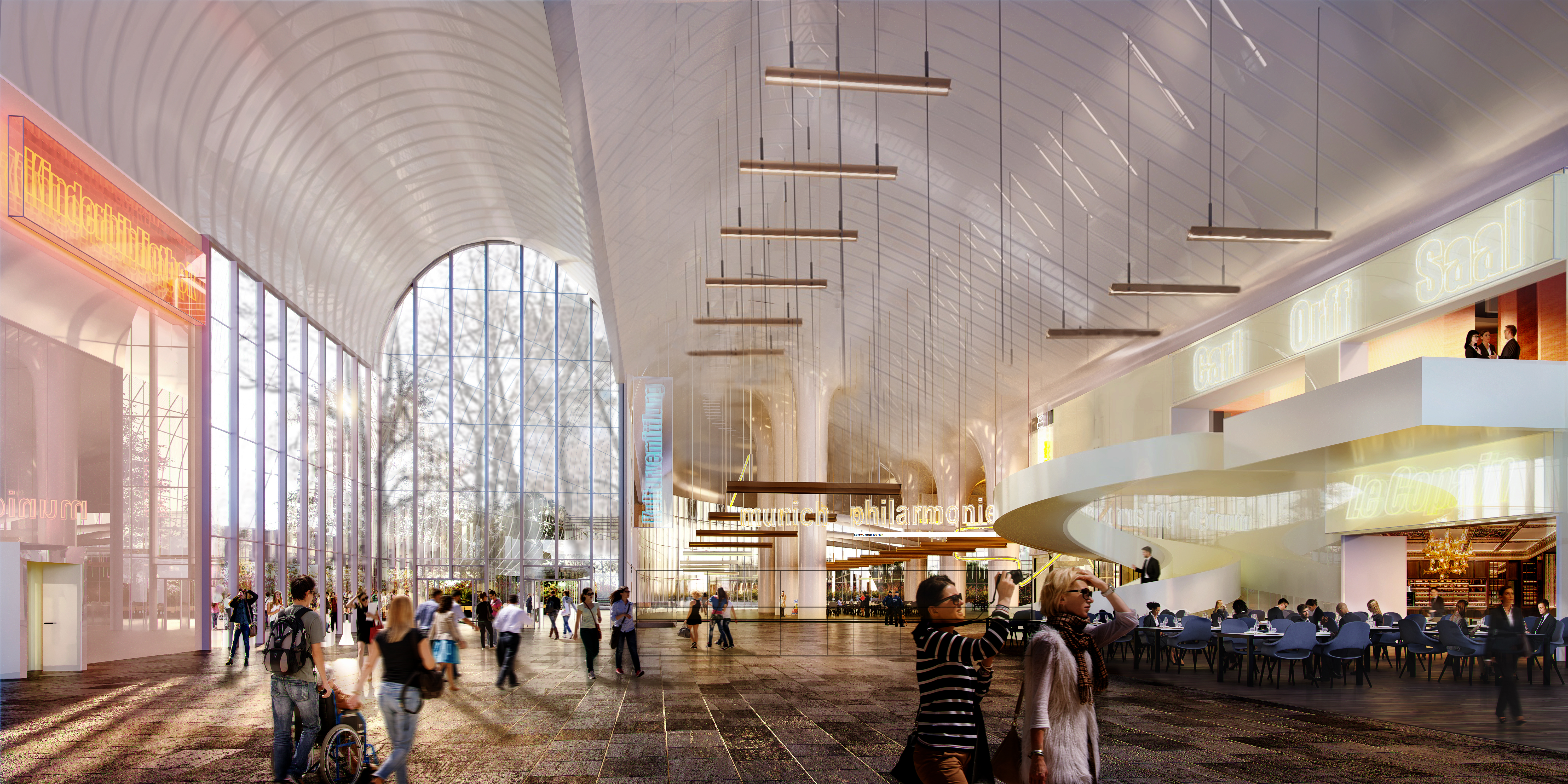
- Munich Philarmonie Lobby
- MSB
- Foyer Carl Orff Saal (stairs + lifts)
- MVHS
- Le Copain restaurant
- Bar-Coffee Shop
- Inner passage to back of house
- Celebidache Terrace
- Viewing Mirador on the Roof (stairs + lifts)
- Bar-Café on the Roof (stairs + lifts)
- A la carte Restaurant on the Roof (stairs + lifts)
- Kulturvemittlung
- GMG offices
- Music Library
- Kinderbibliothek
- Kindergarten
- Foyer of Black Box and Kleiner Konzertsaal (stairs + lifts)
- General Gardrobe
- VSB lecture Hall
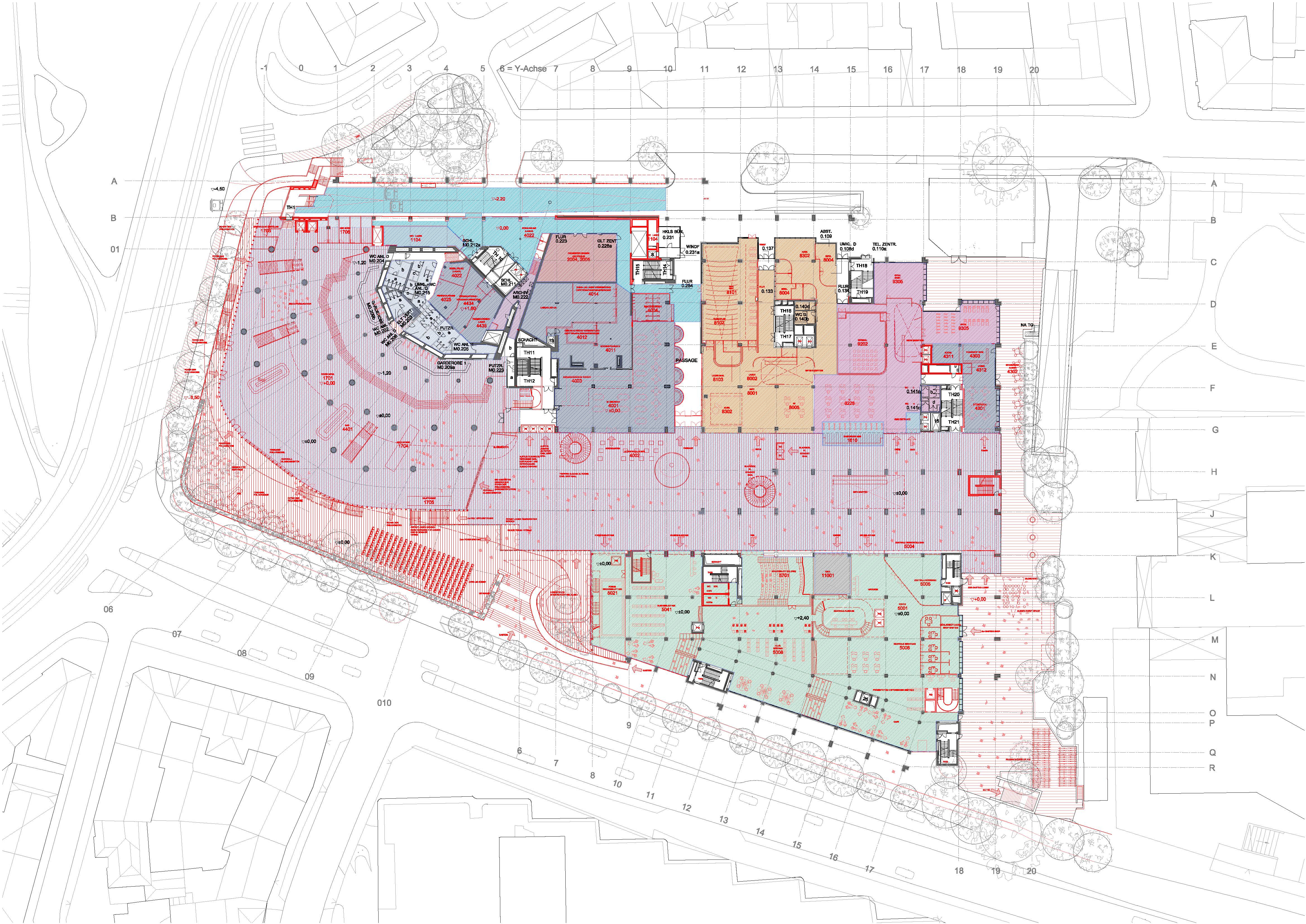

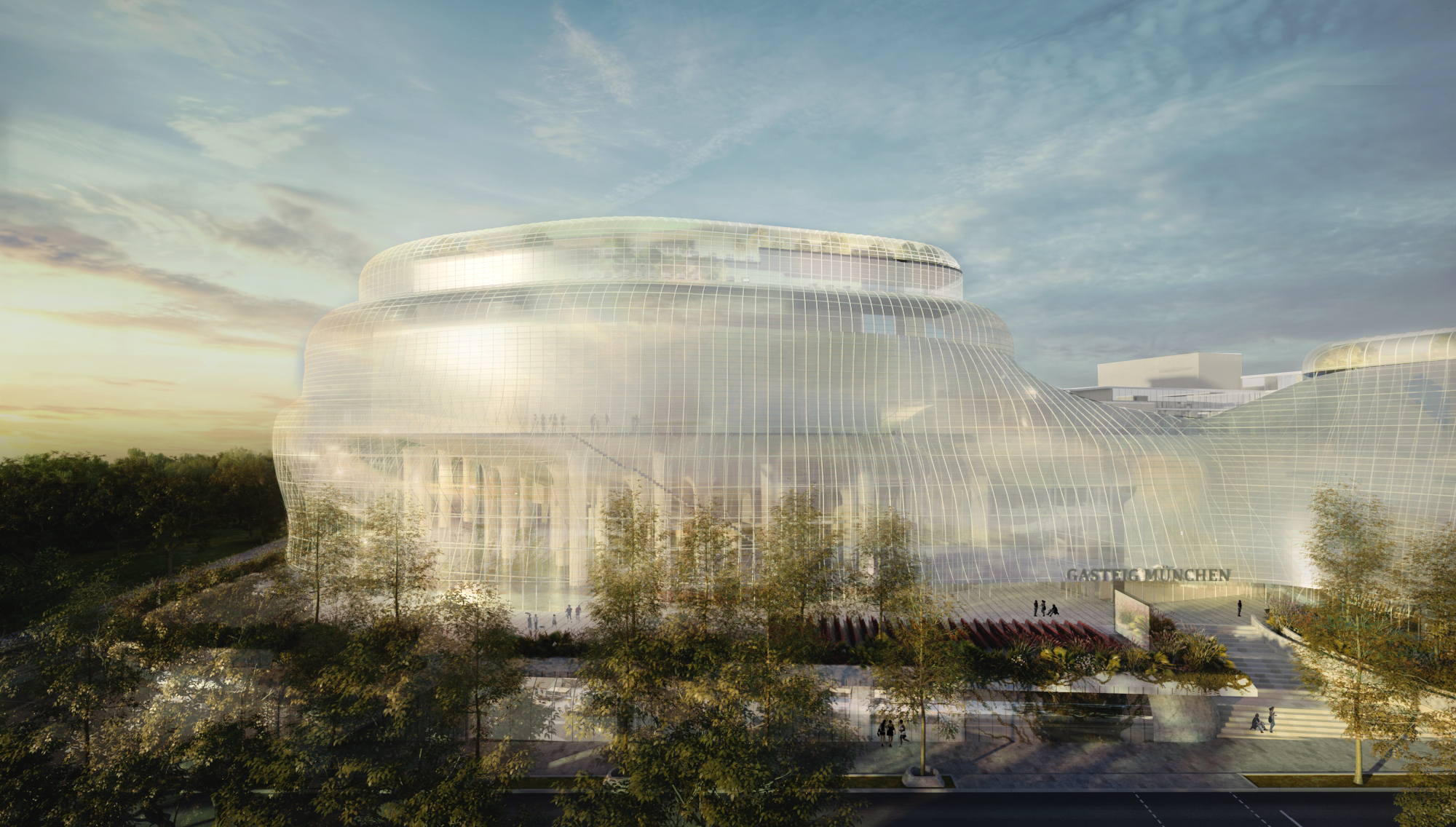
The Foyer of the philarmonie has been redisigned with the following principles:
- Open the possibility of other events to take place at other times of the day (is a lot of space that is being used in a very little fragment of time per day). We have connected this space to a new Great general Lobby for the Gasteig, so it can work as a great large space completely connected.
- Open up views to the exterior, to Munich, and to a great new open terrace in ground floor.
- Change the materials and colour of the interior to create a more luminous and light atmosphere.
- Open up spaces vertically creating a higher open space, eliminating some of the intermediate levels- conforming at the moment a complex repertoire of “cascading terraces” that have been executed with very heavy construction techniques and enormous structural elements that can be certainly reduced. A new circulation is also proposed, but the same accesses and doors to the Philarmonie are kept.
- The main structural elements will be maintained. Pilars, main beams and the box of the philarmonie will be kept. The proposed changes would only affect slabs and the beams that supported them.
- Substitution of the existing glass façade, adding some more space to the outside, and creating a new façade, lighter and luminous.
- This foyer at ground level is very much connected to the exterior terrace on different places so that interior-exterior events can take place simultaneously (a jazz concert outside, using a bar inside, and simultaneously a book presentation followed by a cocktail in another part of the terrace).
- The foyer at ground floor level can also hold interior events simultaneously as long as acoustically compatible.
- The Foyers will have a series of bars that will serve them food and hot and cold beverages.
A new Upper Foyer is created overlooking the city. From this Foyer the visitors will be able to access the upper entrances of the Philarmonie. This Foyer is envisaged as a playful alternative to the larger Foyer at Ground level, a space that it is completely different to the lower foyer in character but very attractive too, so that visitors will certainly like to stroll from one to the other. There are intermediate levels too, more intimate, to access other levels of the Philarmonie


